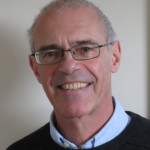It must be one of the most annoying and predictable child behaviours. Perhaps even more predictable than asking if orange juice has got bits in. Any journey of any length will be punctuated by the repeated question, “Are we nearly there?” Put “children car journeys nearly there” into Google and you’ll get lots of advice. It’s a really tedious question, to which the answer is always, “Be patient!”, so why (as a former colleague complained to me) do editorialists feel so keen to ask it? Children are asking a literal question, the “there” being grandma’s, the zoo, or the seaside. In medicine the question is metaphorical; the destination is not a place but a result: a better diagnosis or a better treatment.
It’s not easy to measure the phrase’s prevalence because all the words are stopwords on PubMed, which makes the phrase unsearchable in any way. Google Scholar has no such restrictions: for example, you can enter the search <“and so” AND medicine> and get nearly three million results. Doing the same for “are we there yet” gets 30000. That doesn’t mean there are 30000 articles containing the phrase, because some of the results will be duplicates, but nonetheless that is an awful lot of wasted words.
I looked at the first ten results: were any of them nearly there? A pathway of hyaluronan catabolism? It’s enormously complicated, with many hyaladherens and inhibitors associated with the various hyaluronidases. So, we have a long way to go to devising the pathway.
Will we be able to show specific genetic causes in complex diseases? “We believe that definitive proof of causation will remain elusive, owing, in part, to our inability to randomly assign people to genotypes.” So that’s a loser, then.
How about pharmacogenetics and designer drugs, a topic that gets regular airing in the national press suggesting we will all be buying cures off the shelf by next year? Well, it is “not on the immediate horizon, more a distant goal.”
Another topic that has made the nationals is human-mouse models, but pessimism—realism?—rules: “the clinical translational capacity of even the most optimized models may be restricted by limited diversity in the human major and minor histocompatibility alleles that can be expressed in a mouse”.
Two showed a bit more promise. Applying gene therapy for severe combined immunodeficiency has made a promising start, but it is only a start, so, no: we aren’t there yet. And genetic screening prevents hypersensitivity reactions to abacavir “in some patients, but with provisos.”
The other four articles were pay-for-access, but there seems little doubt that we aren’t there, and that any article asking if we are will conclude that we aren’t.
Neville Goodman is a retired consultant anaesthetist and a writer. He is co-author of a book on medical English.
Competing interests: I have read and understood BMJ policy on declaration of interests and declare that my only competing interest is my co-authorship of a book about medical English.
